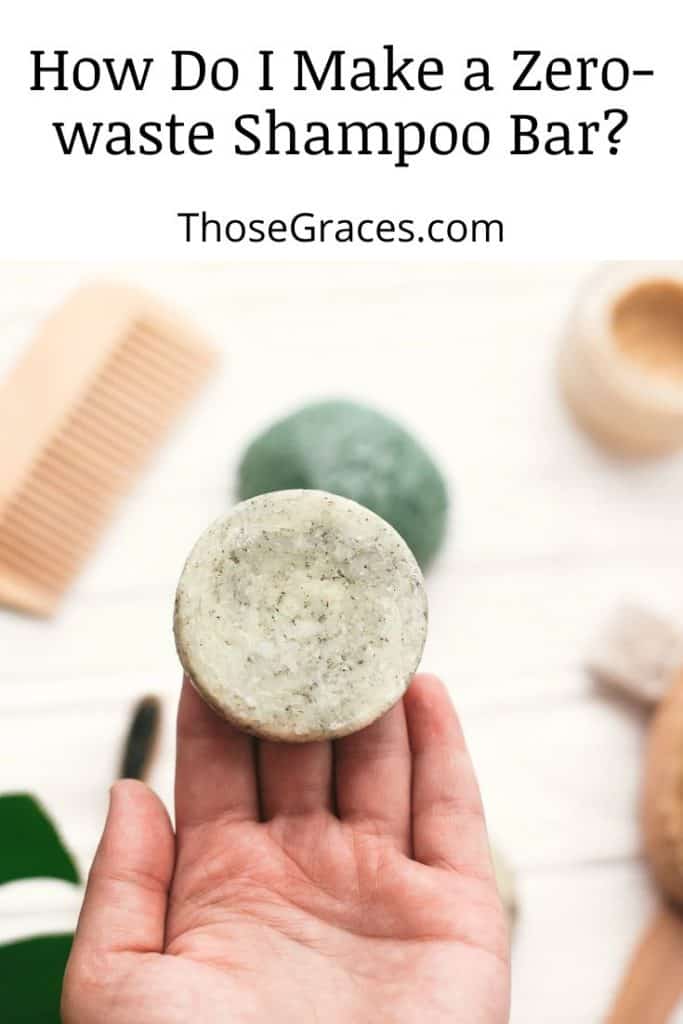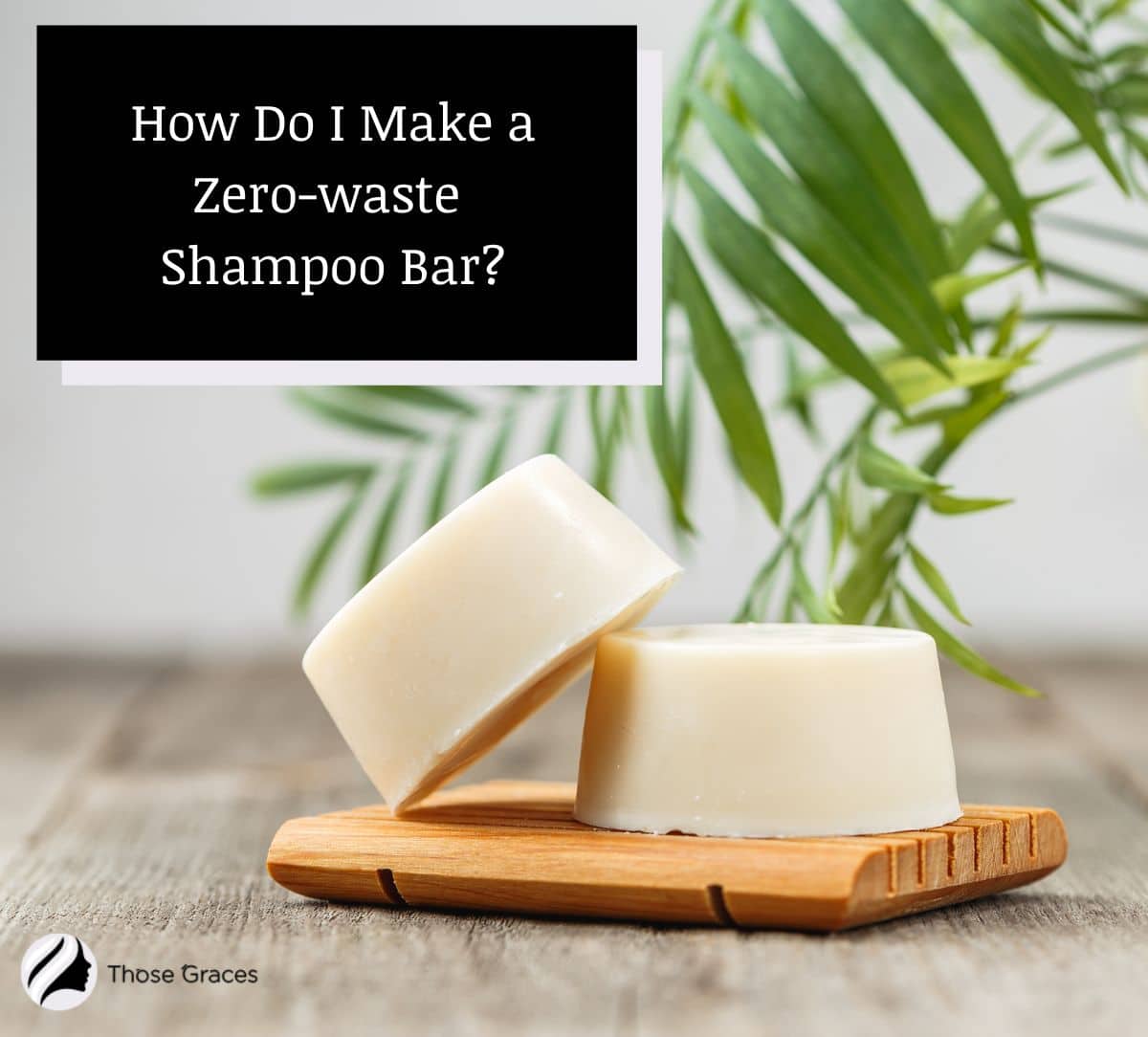Asking yourself: “how do I make a zero-waste shampoo bar?” I love nothing more than zero-waste, and I wanted to have natural alternatives to conventional shampoo with nasty ingredients.
I used cocoa butter, essential oils, some clay, and a few very specific ingredients that I’ll list for you later.
Follow a few steps, and you’ll have your shampoo bar in no time. Read on!
Table of Contents
Key Takeaways
- Make your own zero-waste shampoo bar with just a few ingredients.
- Avoid wasteful packaging and harsh chemicals found in store-bought bars or liquid shampoo.
- The ingredients are easy to source, and it’s a fairly simple process.
CHECK: Zero Waste Beauty Routine
How Do I Make a Zero-waste Shampoo Bar?
Zero-waste isn’t just about cleaning up plastic bottles. It’s also about the LITTLE things we can do at home, including finding zero-waste shampoo brands or making your own natural shampoo bar (1).
Let’s get cooking with my DIY shampoo bar recipe.
What You Will Need
- 32.50g SCI (sodium cocoyl isethionate) in powder form.
- 3g cocoa butter.
- 1g jojoba.
- 11g CAPB (cocamidropopyl betaine).
- 1g essential oil (your choice, I like mint or lavender).
- 0.75g soap nut powder (or shikakai powder).
- 0.25g eco preservative.
- 0.5g bentonite clay.
- Tablespoon.
- Scales.
- Flexible silicone mold.
- Glass container (heat-resistant).
- Gloves (optional).
CHECK MORE: Best Plastic Free Shampoo and Conditioner
What Are the Ingredients For?
Just quickly, it’s a good idea to go through the purpose of each ingredient so that you have a better idea of the role they play in your shampoo bar.
Cleaning ingredients:
- SCL.
- CAPB.
- Soap nuts powder.
Detox ingredients:
- Bentonite clay.
- Essential oils.
Moisturizing ingredients:
- Cocoa butter.
- Jojoba oil.
- Eco preservative.
Now, follow these steps to make your zero-waste shampoo bar.
1. Weigh Your Powders
The first step is to WEIGH all of your powders into the glass container.
Pro Tip: Make sure you use gloves during this process to avoid skin irritation.
Once you have all the powders in the container, give them a GOOD stir until everything is evenly mixed.
2. Melt the Butter
Next, we need to MELT the cocoa butter. You can do this either in a bowl over a saucepan of simmering water or in the microwave.
If you’re using the microwave, make sure that you do it in QUICK bursts and stir it often to avoid scorching the butter.
Once the cocoa butter has melted, ADD it to the glass container with the powders and stir until everything is combined.
3. Mix the Remaining Ingredients
Now it’s time to add the REMAINING ingredients: jojoba, essential oils, soap nut powder (or shikakai powder), and eco preservatives.
Stir until everything is EVENLY mixed together, then add the bentonite clay and stir again.
Pro Tip: If you find that the shampoo bar mixture is too thick, you can add a little bit of water until it reaches the desired consistency.
4. Pouring and Setting
Now it’s time to POUR the mixture into the silicone mold. You can do this by spooning it in or pouring it in from a height (this will help to get rid of any air bubbles).
Once the mold is full, TAP it on the counter to get rid of any air bubbles, then put it in the fridge to set for at least an hour.
Pro Tip: You can speed up the setting process by putting the mold in the freezer for about 20 minutes.
5. Unmolding
Once the shampoo bar has SET, it’s time to unmold it. To do this, simply flex the mold until the bar pops out.
Pro Tip: If the bar is stubborn, you can run a knife around the edge of the mold to loosen it up.
There you have it: your very own zero-waste shampoo bar. Don’t worry. They’ll lather, and you will find they work FANTASTICALLY.
Can You Use Any Substitute Ingredients?
Now that you know HOW to make a zero-waste shampoo bar, you might wonder if you can substitute any ingredients.
The answer is YES, you can.
For example, if you don’t have cocoa butter, you can use shea butter OR mango butter. And if you don’t have jojoba, you can use olive oil or coconut oil.
The same goes for essential oils and soap nut powder (or shikakai powder).
The only ingredient you CAN’T substitute is sodium cocoyl isethionate (SCI) because it gives the shampoo bar its foaming properties.
FAQs
1. Does a shampoo bar work?
2. How long does a shampoo bar last?
3. Do shampoo bars cause any side effects?
4. How do I store a shampoo bar?
5. Do I need to use a conditioner with a shampoo bar?
6. Can you make a conditioner bar?
7. Can I use a shampoo bar on color-treated hair?
8. Can I use a shampoo bar on dry hair?
Conclusion
You don’t have to spend too much time wondering, “how do I make a zero-waste shampoo bar?”. Simply do it.
Zero-waste solid shampoo is pretty simple to make, and the ingredients are easy to find. This means you can get started any time you like, and you might even want to SHARE them with friends and family.
Remember, you can have fun with the essential oils as you experiment with FRESH scents and the benefits that each one provides. For example, lavender is great for stress and anxiety — so is mint.
I hope you make my zero-waste shampoo recipe and that it has inspired you to start your own zero-waste journey.

References
1. Awasthi AK, Cheela VRS, D’Adamo I, Iacovidou E, Islam MR, Johnson M, et al. Zero waste approach towards a sustainable waste management. Resources, Environment and Sustainability. 2021;3:100014.


